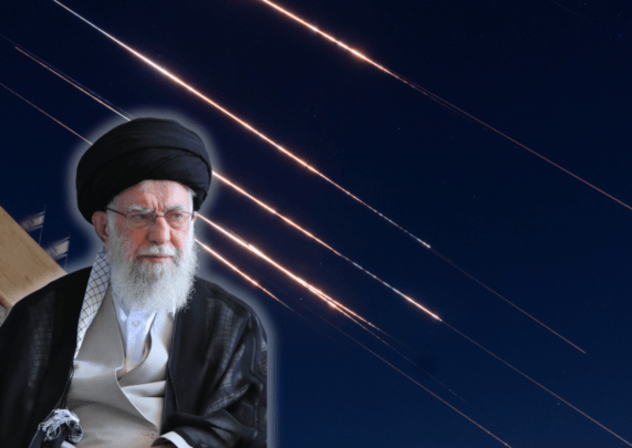Iran's Nuclear Defiance After Strikes Raises New Questions Over Program's True Nature

TEHRAN – A series of recent strikes on Iranian facilities and the killing of senior military personnel have reignited a fierce international debate over the ultimate purpose of Iran's nuclear program. Tehran's defiant response, coupled with new intelligence assessments and admissions from international monitors, has pitted its long-standing narrative of peaceful energy development against mounting evidence that critics say points towards weaponization.
A Question of Intent: Military vs. Peaceful Use
At the heart of the renewed scrutiny are intelligence assessments, including a recent report from the Institute for the Study of War (ISW), detailing the destruction of what was identified as a 'Uranium Metal Conversion Plant.' According to the report, such a facility is a critical component explicitly necessary for manufacturing the 'explosive core of an atomic bomb.' This assessment is strengthened by reports confirming that recent strikes simultaneously killed not only top nuclear scientists but also high-ranking commanders from the Islamic Revolutionary Guard Corps (IRGC) and the nation's ballistic missile program, suggesting a deep, operational link between the three entities.
In response to these allegations, Iranian officials have consistently maintained that their nuclear ambitions are entirely peaceful. Iran's Ambassador to the United Nations has reiterated the country's official position, stating that its enrichment activities are for civilian energy and medical isotopes, and that its program is in compliance with its rights under international treaties. The government has condemned the attacks as acts of foreign aggression designed to cripple its legitimate technological advancement.
However, this official narrative is being challenged by revelations from the International Atomic Energy Agency (IAEA). The agency's chief recently admitted that the IAEA has lost track of a significant stockpile of uranium enriched to 60% purity—a level just a short technical step from weapons-grade. The missing stockpile, which experts estimate is enough for at least nine nuclear bombs, may have been moved from its known locations before the recent strikes, leaving its current whereabouts unknown to international inspectors. This lack of visibility, critics argue, directly undermines Tehran's claims of peaceful intent.
Transparency and International Oversight in Collapse
The crisis of confidence has been exacerbated by a near-total breakdown in transparency. The IAEA chief has publicly confirmed that his inspectors are now barred from accessing key Iranian nuclear facilities, making independent verification of the country's activities and material stockpiles impossible. This blackout prevents the international community from ensuring that nuclear material is not being diverted for military purposes.
Iranian officials have framed the decision to bar inspectors as a sovereign response to what they describe as the West's failure to uphold its commitments under previous nuclear agreements and the imposition of crippling economic sanctions. They argue that cooperation is contingent on the lifting of these sanctions and a cessation of what they term 'nuclear terrorism' against their facilities and scientists.
Yet, this justification is being viewed with deep skepticism in light of defiant public statements and actions on the ground. Iran's UN ambassador recently declared that the nation's enrichment activities 'will never stop.' This vow is substantiated by fresh satellite imagery showing that immediate repair operations have already begun at the heavily fortified Fordow nuclear facility. The IAEA confirms that Iran retains the technical knowledge and infrastructure to restart its advanced enrichment centrifuges 'in a matter of months,' a capability that makes the lack of inspector access particularly alarming for security analysts.
Regional Aggression and Fraying Alliances
The debate extends beyond the laboratory and into the realm of direct military action. Multiple reports have now confirmed an Iranian missile attack on Al Udeid Air Base in Qatar, a facility that hosts U.S. military personnel. This overt act of aggression demonstrates a willingness to use ballistic missile capabilities to strike regional adversaries. This has been accompanied by a surge in hostile rhetoric, most visibly at the state-sponsored funerals for the slain IRGC commanders. News footage showed massive crowds, led by officials, chanting 'Death to America' and 'Death to Israel,' reinforcing the regime's revolutionary ideology.
While Tehran often portrays such actions as defensive, its international standing appears increasingly strained. The response from Iran's key allies, China and Russia, to the recent strikes was described by observers as 'surprisingly muted.' One geopolitical analysis noted that the 'Iran-China-Russia Axis Crumbles When It Matters,' suggesting that while anti-American sentiment can provide a basis for alignment, there is little appetite in Beijing or Moscow to be drawn into a direct conflict sparked by Iranian aggression. This has left Iran appearing more isolated on the world stage than its government projects.
As the international community grapples with these developments, the central question for policymakers has shifted. With Iran enriching uranium to near-weapons grade, barring inspectors, and demonstrating military hostility, the debate is no longer just about the technical capabilities of its nuclear program, but about the regime's ultimate intentions and the diminishing time the world has to react.